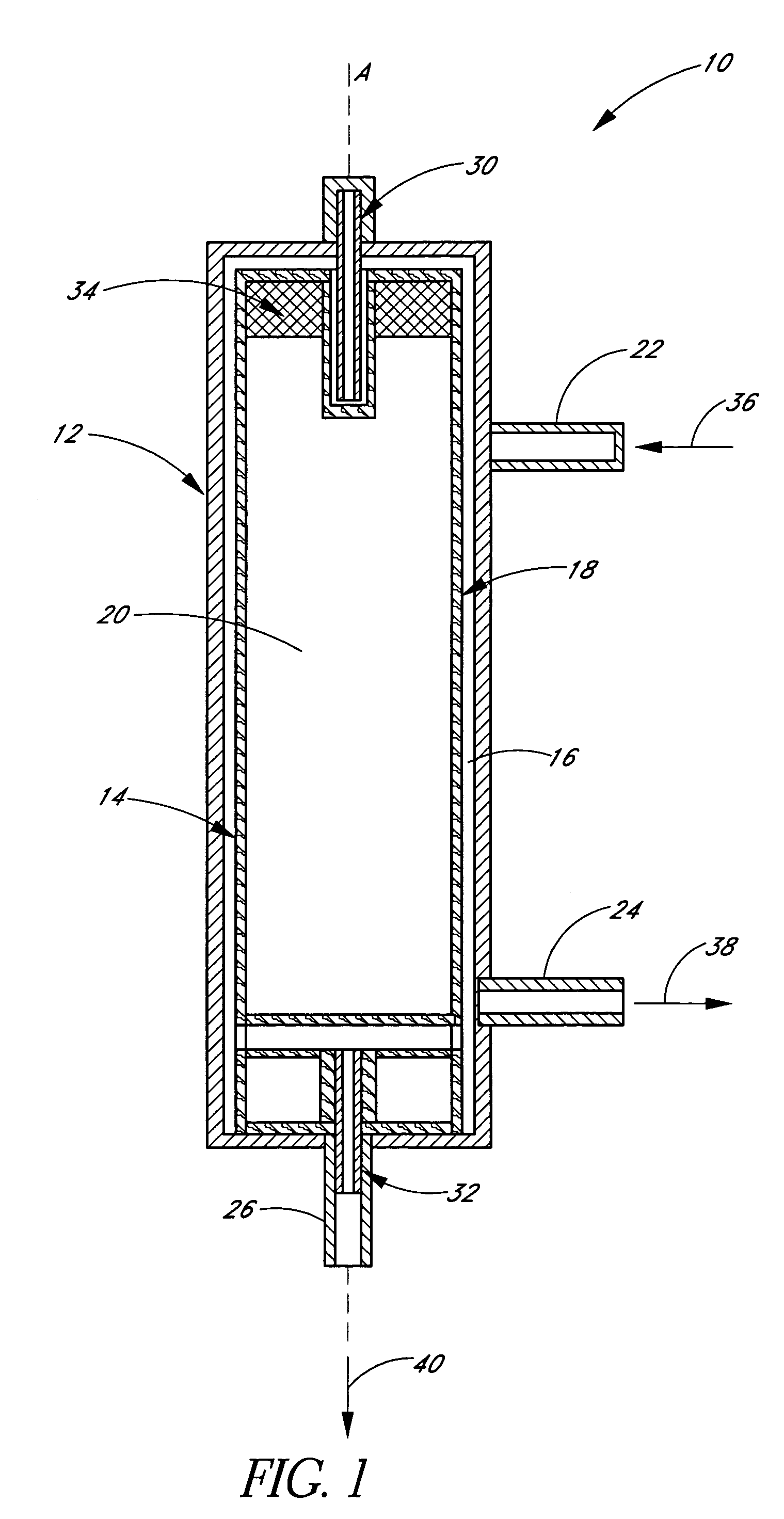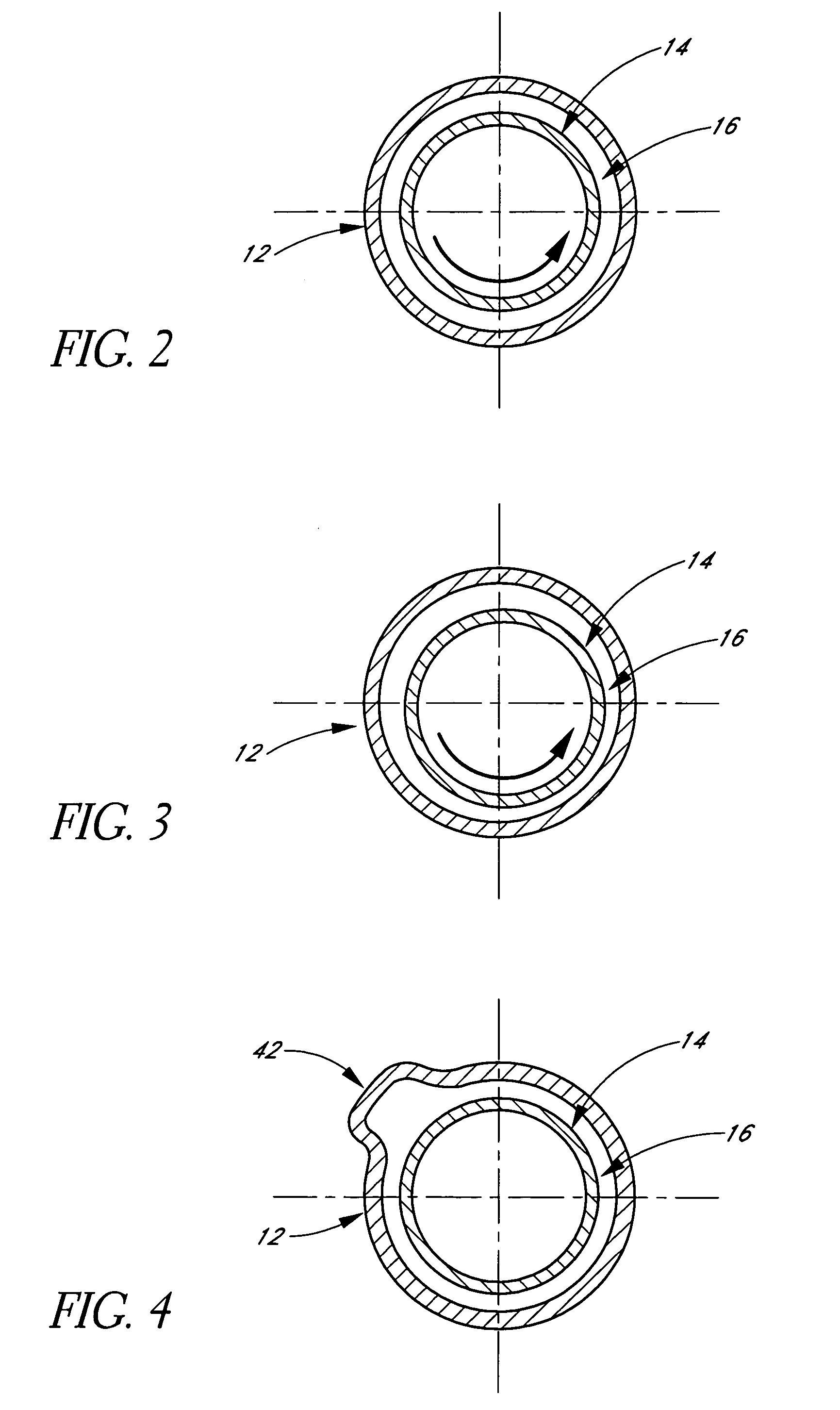Two stage hemofiltration that generates replacement fluid
a technology of hemofiltration and replacement fluid, which is applied in the direction of filtration separation, multi-stage water/sewage treatment, separation process, etc., can solve the problems of blood dialysis filter blockage, difficulty and cost of producing a large amount of replacement fluid, and substantial amount of medical waste that is costly to dispose o
- Summary
- Abstract
- Description
- Claims
- Application Information
AI Technical Summary
Problems solved by technology
Method used
Image
Examples
Embodiment Construction
[0030] Traditionally, blood dialysis procedures are single stage. In other words, the blood is removed from the patient, processed through a single filtration device to remove waste products, and returned to the patient. Unfortunately, blood is a heterogeneous fluid with molecules that are both smaller and larger than these waste products, which are generally in the range of 300-6,000 Daltons. As a result, filtration devices that remove the waste products from blood often inadvertently remove many of those smaller molecules, e.g. water and electrolytes, in the process. These smaller molecules must then be replaced prior to reintroduction of the blood to the patient.
[0031] In typical machines, blood is pumped from the patient at 300-450 mL / min. Approximately half of this flow is filtered from the blood and disposed of as blood-waste. In a 3 hour procedure, between 20 and 30 liters of replacement fluid must therefore be added to the blood flow in order to keep the patient's blood vol...
PUM
| Property | Measurement | Unit |
|---|---|---|
| Flow rate | aaaaa | aaaaa |
Abstract
Description
Claims
Application Information
 Login to View More
Login to View More - R&D
- Intellectual Property
- Life Sciences
- Materials
- Tech Scout
- Unparalleled Data Quality
- Higher Quality Content
- 60% Fewer Hallucinations
Browse by: Latest US Patents, China's latest patents, Technical Efficacy Thesaurus, Application Domain, Technology Topic, Popular Technical Reports.
© 2025 PatSnap. All rights reserved.Legal|Privacy policy|Modern Slavery Act Transparency Statement|Sitemap|About US| Contact US: help@patsnap.com



